#purple prickly pear cactus
Explore tagged Tumblr posts
Text

A purple prickly pear cactus (Opuntia azurea) in Big Bend National Park, Texas, USA
by Alan Cressler
#purple prickly pear cactus#prickly pear#cacti#succulents#plants#opuntia azurea#opuntia#Cactaceae#Caryophyllales#plantae#flora: usa#flora: north america
116 notes
·
View notes
Text

194 notes
·
View notes
Photo
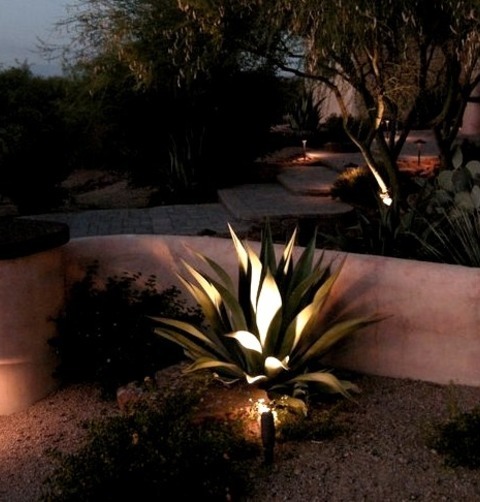
Brick Pavers Front Yard Phoenix Here is an illustration of a mid-sized, partially-sunny, southwestern, drought-tolerant front yard brick retaining wall landscape in the summer.
2 notes
·
View notes
Text
Creating a Colorful and Biodiverse Garden: Companion Planting with Firecracker Penstemon
Welcome to our gardening blog, where we explore creative and sustainable ways to enhance the beauty and biodiversity of your outdoor space. Today, we’re excited to delve into the world of companion planting with Penstemon eatonii, commonly known as Firecracker Penstemon. This stunning native plant with its fiery red blooms can bring a burst of color and attract beneficial wildlife to your garden.…
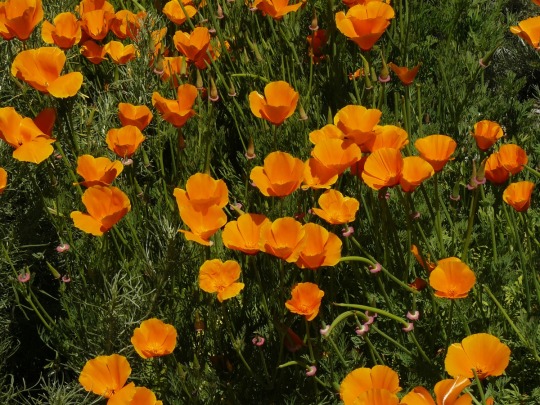
View On WordPress
#Agave Species#Arid Landscape Aesthetics#Blue Palo Verde#Brittlebush#California poppy#Color Coordination in Gardens#Companion Planting#desert gardening#Desert Marigold#Drought-Tolerant Plants#Eco-Friendly Plant Choices#Firecracker Penstemon#Garden Design Ideas#Globe Mallow#Golden Barrel Cactus#Native Desert Plants#Plant Pairings#Purple Sage#Red Yucca#Santa Rita Prickly Pear#Sustainable Gardening#Wildlife Attracting Plants#Xeriscaping
1 note
·
View note
Text
The (Real) Stardew Valley Farm Update 2024
I’m wrapping up my third year trying to grow everything from Stardew Valley in our yard, with substitutions as needed, preferably with Midwest USA native plants.
I’m continuing to battle the invasive plants (why won’t the honeysuckle and thistles stop?????), beg for truckloads of woodchips (Google decided our address isn’t real anymore), and deal with a body and brain that makes going outside impossible sometimes (the past two years have been rough medically). But despite all of that I still managed to make a ton of progress!
Here’s how things stand as of now. If you’re looking back at previous posts you might notice some differences, but that’s mainly because things I planted died (drought + medical crises don’t bode well for newly established plants). I’ve also added the additional crops from the new update.
2021
Amaranth - Native white amaranth
Grape - Native riverbank grapes (so many grapes). I’m hopefully going to successfully propagate some cuttings from the neighbor’s green cultivated variety
Dandelion - Obviously
Maple Tree - Native silver, red, and sugar maples
Pine Tree - Douglas fir
Apple Tree - Three old apple trees of different varieties in very rough shape. I’ve been working to prune them up and two are looking a lot better. I’d love an Enterprise apple tree at some point
Coffee Bean - Chicory (a naturalized plant commonly used as a coffee substitute)
Salmonberry - Native black raspberries since salmonberries aren’t from around here, although I really want to add raspberries of various colors in the future
Starfruit - Native wood sorrel
Cave Carrot - Queen Ann’s Lace, AKA wild carrot
2022
Kale
Rhubarb
Strawberry - Both cultivated and native
Tulip
Radish
Tomato
Eggplant
Fairy Rose - Native prairie rose
Cranberries - Native cranberry viburnum
Orange Tree -Native persimmons, which produce orange fruit
Daffodil
Spring Onion - Native nodding onions
Spice Berry - Native spicebushes
Wild Plum - Native plums
Crocus
Cherry Tree - Native black cherries and nonnative bush cherries
Banana Tree - Native pawpaws, which are also known as Indiana bananas
Sweet Gem Berry - Native Juneberry (Downy Serviceberry)
2023
Garlic - Native wild garlic
Blueberries - I planted three varieties and only one survived. Don’t shortcut your bed preparation, friends
Wild Horseradish - Not wild, but contained with my mint
Hops - Teamaker hops which is good for tea since we’re not alcohol fans
2024
Blue Jazz - Native Ozark Bluestar
Beets
Apricot Tree - Native passionflower vine, also known as wild apricot
Sunflower - Both native and non-native sunflowers
Pumpkin
Cactus Fruit - Native prickly pear cactus
Melon - Cantaloupe
Oak Tree - Native dwarf chinquapin oak, which took me forever to get
Hot Pepper
Palm Tree/coconut - Native palm sedge
Poppy - Native purple poppy mallow, after other native poppies failed. I still want to grow bread seed poppies, though
Corn - Tried some gorgeous colored corn and popcorn that didn’t grow great but they did grow!
Green bean
Hazelnut - They’re supposed to be easy to grow but they do not like me. Third time’s the charm, right?
Carrot
Summer squash
Powder melon - I decided to do honeydew melon because it’s kinda powdery and I don’t really have any other ideas
Planned for 2025 and beyond
Potato
Pineapple - White strawberries (pineberries)
Winter Root - Hopniss, a native root vegetable
Red Cabbage
Artichoke - Native Jerusalem artichokes
Yam
Bok Choy
Leek
Fiddlehead Fern - Ferns do not like me
Blackberry
Crystal Fruit - Probably honey berries, which produce fruit earlier than anything else
Ancient Fruit - Native Aronia berries. They’re blue(ish) and have lots of antioxidants so you live to be ancient
Tea Leaves - Native New Jersey Tea bush. The previous ones were murdered by rabbits
Mango Tree - I thought one of our pawpaws was a variety called mango but I was wrong
Ginger - I want to try growing native wild ginger again
Rice - Native rough-leaved rice grass
Wheat - I have some gorgeous ornamental blue wheat seeds
Summer Spangle - Possibly native prairie lily? I was unsuccessful growing it from seed this year but maybe in the future
Parsnip - I can’t get them to germinate to save my life but one day I will be successful
Sweat pea
Holly - Native winterberry holly
Mushrooms - I'm just gonna ignore varieties and try some plugs or similar
Peach - Vine peach. It’s a melon, and more doable than a tree
Mahogany Tree - I think I’ll resort to mahogany nasturtiums
Broccoli
Pomegranate Tree - I could try Russian pomegranates?
Taro Root - I would have to plant it in pots
Snow Yam - Not actually a yam but maybe native sweet potato vine?
Qi Fruit - Very creepy, not sure what to do with this
Over halfway there! If anyone has suggestions for plants please let me know because I’m still stuck on a few and very open to alternatives.
In other news, I’m making Stardew Valley Fair displays with cross stitch patches for each of the items I’ve added that year. I’ll have to post pics of those at some point.
#the (real) stardew valley farm#the habitat ring#gardening#stardew valley#don’t be a petaq grow native plants#I am making the best life decisions and this is definitely worth it
23 notes
·
View notes
Text
how do i do this again? oh yeh...
garden update // august 20th 2024


the pollinator garden that was literally a "toss seeds and see what happens shrug emoji" has officially reached covering-the-view'of-the-house stage. eventually over the course of this fall and winter we will add a fence and plant perennials instead of whatever annual flower seeds i had lying around. asters are popping up in the shade of them all which i find funny since asters prefer cooler weather.

speaking of cooler weather... from the first bit of fall seeds i started i find the interesting germination contrast of saved seeds (not even my saved seeds, a friends) dwarf siberian kale versus bought online. the left was the saved seeds 📝👀 her's grew 10 minutes from my house, the one bought online was from a big boi store further up north. and these did hit 90°+ weather too, which technically was bad BUT not for the seeds that are all "yeh, we know how crazy this weather is nbd 😎"


my favorite basil ever, the spicy globe basil, is finally bolting for seed. i kept harvesting just one bush so i could get seeds sooner rather than later. okra is doing great, too. still giving off flowers and already got a first batch of dried okra for the seeds. i let the okra dry on the plant itself to ensure the most energy gets into those suckers as much as possible.


ok, so i'll start a separate thread for my quest for a frog pond, but i plan on putting it in the middle of the large square bed. everyone, even hubs, was like why big square you cant reach the middle and i was like it fits the space though!! but they were all right, hurts my back trying to reach the middle and tripping over the plants defeats the purpose. but it fits so nicely in the spot!! so frog pond will go in middle, around it is brassicas during the winter, then 2025 is purple tomatillo, 2026 is corn, 2027 okra, and then repeat indefinitely. so tall plants to shade it during the summer, and short plants so it gets plenty of sun in the winter. should be ok right?????? also i have yet to plant my prickly pear cactus because i legit dunno where to put them. i keep moving them around the garden and just not loving wherever they go. ughs.


peppers are almost done, so fall must be around the corner. but don't worry, tomorrow i'm going to dig up most of them and overwinter in the greenhouse. hawks claw totally, cayenne probably not because they had such stunted growth, lemon drop totally not because i have too many, but totes the giant marconi because that's my favorite sweet pepper so far. haven't tried many sweet pepper varieties though, and would love to grow an heirloom not a hybrid. my purple bells still haven't produced anything 😭 but i'll wait to pull those at the last minute... just in case...
lots to do this week. tomorrow is a false fall day, so going to spend it all outside and enjoy it 💚
#suburbia farming#suburbian agriculture#suburban farm#suburban agriculture#gardening#home garden#food not lawns#homestead#nature#homegrown#homesteading#food#grow food#gardenblr#garden blog
19 notes
·
View notes
Text
November 8th, 2023
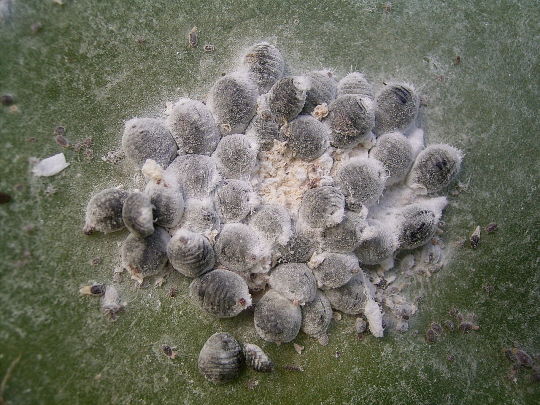
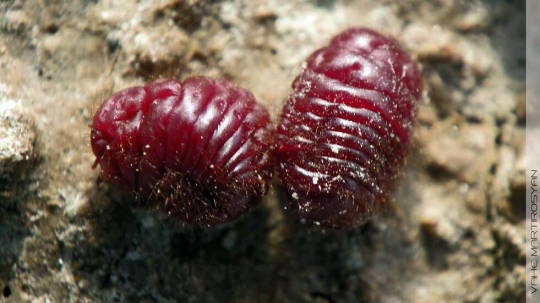
Cochineal (Dactylopius coccus)
Distribution: Mainly found in tropical and subtropical regions; from South America northward to the Southern USA.
Habitat: Deserts and arid areas; found on prickly pear cacti.
Diet: Herbivorous endoparasite; nymphs and female adults feeds mainly on the moisture and nutrients from its host plant, most commonly the prickly pear cactus. Males do not eat.
Description: The cochineal is most well-known for being the insect from which carmine dye is produced. This insect contains large amounts of carmine acid which, when extracted, can produce beautiful dyes ranging from scarlet to crimson. Due to their sessile lifestyle, cochineals are easily swept up from their host plants, after which they are dried and crushed into powder. It takes around 70,000 cochineals to make one pound of dye.
Cochineals spend the majority of their life on one prickly pear cactus or another. The female will feed on the cactus pad, piercing its thick cuticle with her beak-like mouthparts. Once fertilized, she lays her eggs on the same cactus pad, hatching little purple nymphs. After a certain point, the nymphs will form long wax filaments and move to the edge of the cactus pad, where the wind will take them to a new host. At maturity, only males have wings, but they live only to reproduce then die.
(Images by Frank Vincentz and Vahe Martirosyan)
47 notes
·
View notes
Text
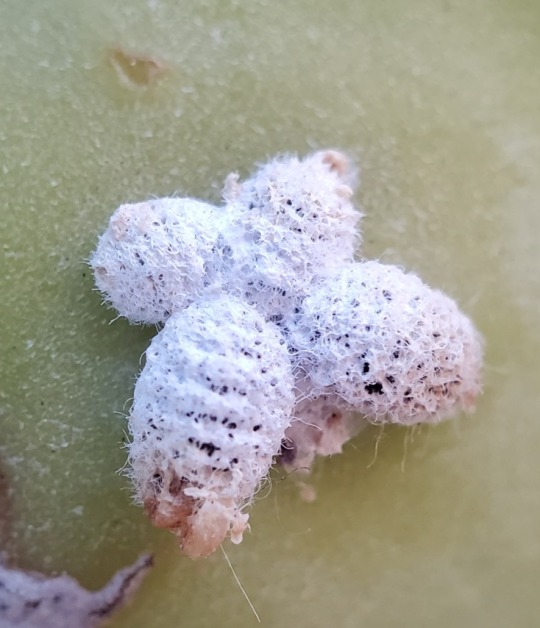
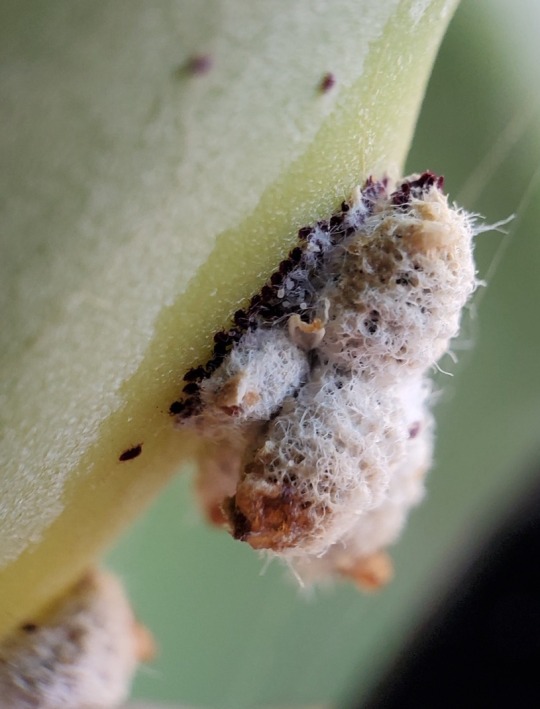

I discovered these interesting scale insects on my prickly pear cactus (opuntia).
It turns out these are cochineal insects (Dactylopius coccus), the source of the natural dye carmine. You can see some of this pigment in the third picture (purple splotch) where the bugs may have been injured. Carmine, aka crimson lake, is frequently found in cosmetics (blush and lipstick) and food (ice cream, yogurt, soft drinks, sausage, and candy). Farming these bugs began as early as 700 BC in South America, and carmine has been used by many indigenous cultures to dye textiles and create artwork.
While mature females are about 25% carminic acid, it still takes tens of thousands of them to produce one pound of pigment.
If I get enough of these, I may try making some dye myself XD
#cochineal#cochineal insects#scale insects#you’ve probably eaten bugs at some point#carmine#crimson lake#food additives#dye#nature#bugs#nature photography#biodiversity#animals#inaturalist#arthropods#entomology#insect appreciation#insects#dactylopius coccus#TIL#random facts#educational#interesting facts#opuntia#bugblr#eat bugs#nom nom nom#hemiptera#parasite
10 notes
·
View notes
Note
Favorite plant? or like maybe top 5?
It seems like a copout answer to just say all of them so I'll give you five in no specific order (below the cut)
Colobanthus quitensis, also known as Antarctic pearlwort. It's one of two known flowering antarctic plants (the other being Antarctic hair grass), it was discovered in the late 1700's-early 1800's. Since Antartica is a dessert it's native plants have a special kind of leaf structure to account for the lack of rainfall.
Cornus florida, or the flowering dogwood. It's native to North America and Mexico, the trees are monoecious meaning that it has both male and female flowers. It also serves as a place for more then 12 species of moths to lay their larvae in.
Phlox subulata, or moss phlox. It's an pink, purple, blue, or white evergreen native to the united states that commonly covers ground in wooded areas. It also serves as a pollinator and can be used to prevent erosion.
Pinus strobus, or the eastern white pine tree. These trees have been known to live for over 400 years and are largely considered the tallest trees in eastern North America. They also serve as habitats for other plants along with animals and insects.
Opuntia, also known as the prickly pear cactus. I had to include some sort of cacti in this because they are so vital to the ecosystem and water cycle. The prickly pear cactus in particular are some of the most cold tolerating cacti, and like many other cacti are only native to the Americas.
#this is just turning into a plant blog for me#which im ok with#feel free to keep asking about plants#ooc: this did take like half an hour to write and research though/lh#pamela isley#poison ivy#ask ivy#dc rp blog#dc rp#dc#dc comics#gotham rogues#plants
3 notes
·
View notes
Text
Plant Therapy Plants left to Collect (30) Alocasia Frydek, Alocasia Frydek Variegated, Amaryllis, Banana Leaf Ficus, Boxwood Bonsai, Christia Obcordata, Golden Barrel Cactus, Greenovia Rose Succulent, Laceleaf, Lemon Lime Philodendron, Madagascar Palm, Olive Tree, Philodendron Pink Princess, Pitcher Plant, Poinsettia, Polka Dot Begonia, Purple Heart, Rat Tail Cactus, Red False Banana, Sansevieria Cylindrica, Satin Pothos, Silver Dollar Jade, String of Buttons, String of Turtles, Tree Philodendron, Weeping Fig, Whale Fin Plant, Xanadu Philodendron, Yellow Orchid
Plants Owned: 59 African Violet, Air Plant, Albuca Spiralis, Alocasia Bambino, Bat Flower, Boston Fern, Bromeliad Antonio Pink, Bunny Eared Cactus, Calathea Freddie, Chinese Evergreen, Christmas Cactus, Desert Rose, Donkey Tail Succulent, Dragon Tree, Dragon's Blood Succulent, Echeveria, English Ivy, Fiddle Leaf Fig, Giant Variegated Monstera, Golden Pothos, Heart Leaf Philodendron, Hedgehog Aloe, Hens and Chicks, Hoya Heart, Hoya White Leaves, Iresine Bloodleaf, Jade Plant, Jellyfish Air Plant, Lemon Button Fern, Lemon Lime Prayer Plant, Living Stone, Lucky Bamboo, Maidenhair, Mini African Violet, Monstera Deliciosa, Peace Lily, Peperomia Puteolata, Peperomia Watermelon, Peruvian Apple Cactus, Pilea Peperomia, Pink Orchid, Polka Dot, Ponytail Palm, Prickly Pear Cactus, Rainbow Coleus, Red Agloanema, Rosemary Topiary, Round Cactus, Rubber Plant, Schefflera, Snake Plant, Spider Plant, Spiderwort, String of Hearts, String of Pearls, Swiss Cheese Monstera, Venus Fly Trap, White Wizard Philodendron, Yucca, Zamioculus Zamiifolia, Zebra Plant, Zig Zag Cactus
2 notes
·
View notes
Text
thanks for the tag, @teejaystumbles! I'm alive believe it or not :)
Rules: Tag 10 (or less) people you want to get to know better
relationship status: as those in my server know, I am for the first time in my life Not Single. The Girlfriend is why I haven't been writing as much, LOL. (I'm very happy)
favourite colour: green! with purple coming in close second! But always, always, green my beloved
song stuck in my head: Right now it's DEAN's "come over," and Shocking Blue's "Venus."
three favourite foods: I am a sucker for mac n' cheese, and cheese, and olives. Yeah.
last song I listened to: "Back in Town" by Tuxedo
dream trip: I will admit, I've been enthralled by the Mongolian Plains for years and years. I'd love to go out into them, on horseback, and just be out in the middle of nowhere with all that empty space, in the six feet of space between heaven and earth and something like that... Admittedly, I am from the Appalachian regions. I should probably visit Ohio or another flat, empty state before romanticizing Mongolia.
last thing(s) i googled: "native pennsylvania cactus" There is, in fact, a cactus species native to PA. It's Optunia humifusa, the Eastern prickly pear cactus. It has edible fruit, and looks like this:

tagging: @tj-dragonblade, @fractalspaces, @blueberrymffn, and anyone else who wants to join!
3 notes
·
View notes
Text
All I want for Christmas!
“Winter, a lingering season, is a time to gather golden moments, embark upon a sentimental journey, and enjoy every idle hour.” –John Boswell
Since I gratefully have my two front teeth and a loving family, my Christmas dream list includes peace on earth, health, happiness, and journeys to savor nature’s wonders. Since my November wishes materialized as I prayed for rain, I’m hopeful for my December desires.
To explore California’s natural wonders, my family traveled to the Mojave Desert to visit Joshua Trees National Park. It is a marvel of adaptation where Native Americans stewarded the land for thousands of years. The park spans the Mojave Desert in the west and the Colorado Desert in the east, protecting 792,510 acres with over 80 percent (558,000 acres) managed as wilderness.
The jumble of stacked boulders began underground eons ago because of volcanic activity. When the magma rose, it intruded the overlying rock. When the granite cooled and crystalized, it formed huge rock formations with horizontal and vertical cracks, and when it contacted groundwater, the granite continued to uplift. As the soil eroded, scattered across the landscape were huge piles of monzogranite heaps.
In the Mojave Desert, the vegetation includes pinyon, juniper, scrub oak, yucca, prickly pear cactus, and Joshua Trees. The Joshua tree, which can grow to 40 feet or more, is not a tree but a species of yucca. It has waxy, spiny leaves with little surface area exposed, which conserves water. The tree is home to many birds, including Scott’s oriole, red-tailed hawks, ladder-backed woodpeckers, American kestrels, scrub jays, Gambrel quail, and loggerhead shrikes. The chunky songbird, loggerhead shrikes use the Joshua tree’s sharp-pointed leaves to impale their prey! Although we didn’t see any on this adventure, the desert is also home to rattlesnakes, desert tortoises, desert iguanas, and bighorn sheep. We did see plenty of comical roadrunners.
In other areas, we witnessed fluorescent pink blooming periwinkle and the Christmas colors of Pride of Barbados.
Yet, of all the flora in this vast wonderland, my favorite area was the Cholla Cactus Garden. The cholla, pronounced choy-ya, is a cactus known for its barbed spines that attach themselves to anything that touches it. There are several species of cholla, but the ones we saw were referred to as “teddy bear cactus” because they look so sweet, soft, fuzzy, and fluffy. But don’t be fooled; they are covered with formidable spines. We arrived for a dazzling sunset illuminating the cholla in a sensational spectacle.
Getting more into the holiday spirit, I am admiring Christmas decorations. Growing up on the farm, my parents would light up about two acres of land so that Santa could find our ranch in the darkness. As kids, we always loved the decor and were excited to witness Santa’s reindeer racing across the night sky.
My Fire Chief nephew continues the tradition and never fails to embellish his house with the greatest light display. Since he was a little kid, he has been lighting the way for Santa Claus with his creativity.
Every year, I look forward to the Christmas tree decorations of family and friends. My friends Linda and Steve, always cut a live tree and adorn it with a different theme annually.
My daughter and her husband would make my parents proud with their animated decorations. They even add music!
At my house, I enjoy harvesting pomegranates not only to eat but to hang as ornaments. Many fruit-bearing trees provide wondrous gifts of nature during December.
Persimmons, quince, and chestnuts offer exotic flavors for holiday gastronomy. It’s also fun to mix up the colors of your décor. Purple is a favorite festive hue that I employ. Don’t be afraid to experiment and have fun with your choices.
It's important to think about safety, however, when you are doing your decorating. According to the Consumer Product Safety Commission (CPSC) in 2023, 14,900 individuals were treated in hospital emergency rooms due to decorating-related injuries.
To put the magic in your winter wonderland while keeping your family secure and protected, here are a few suggestions.
ü Find the freshest tree to light up your yuletide. Whether you cut it yourself, or buy it from your favorite lot, look for a tree with green needles that are difficult to pull from the branch. The tree’s bottom needs to be sticky with resin and needles should not fall off when the tree is shaken. ü Keep all trees, branches, and flammable decorations away from fireplaces, radiators, and high-traffic areas. ü Hang stockings on chimneys only when there is no fire burning. ü Buy new lights that have been tested by the Underwriters Laboratory (UL). Make sure that lights for your garden are labeled as outdoor capable. All lights need good wiring, devoid of any broken or cracked sockets, frayed wires, or loose connections. Only use extension cords that are designed for the outdoors and beware of the number of lights sets that may be attached. ü Never add electric lights to metallic ornamentations as you could be exposing yourself to electrocution. ü When climbing ladders, use the buddy system. ü Or contact a trained handyman to hang your lights. Get $150 discount for a service at https://honeyh.me/eXEn
Now you know what I want for Christmas. What’s on your list?
Peace on earth. Goodwill to all. Health, happiness, and celebrate the holly jolly with the magic of Mother Nature. Enjoy the golden moments, sentimental journeys, and the idle hour!
Happy Gardening. Happy Growing. Happy Holidays!
For more gardening advice for all seasons, check out Growing with the Goddess Gardenerat https://www.CynthiaBrian.com/books. Raised in the vineyards of Napa County, Cynthia Brian is a New York Times best-selling author, actor, radio personality, speaker, media and writing coach, as well as the Founder and Executive Director of Be the Star You Are!® 501 c3, which was just honored as the 2024 Nonprofit of the Year by the Moraga Chamber of Commerce. https://www.BetheStarYouAre.org. If you’d like to make a tax-deductable DONATION through PAYPAL GIVING FUND with 100% going to BTSYA with NO FEES go to: https://www.paypal.com/fundraiser/charity/1504 .
Find info for Cynthia’s StarStyle® Radio Broadcast (http://www.voiceamerica.com/show/2206/be-the-star-you-are )and the teen radio show, Express Yourself!™ (https://www.voiceamerica.com/show/2014/express-yourself ) at https://www.StarStyleRadio.com.
Her newest children’s picture book, Books in the Barnyard: Oh Deer!, from the series Stella Bella’s Barnyard Adventures is available at https://www.CynthiaBrian.com/online-store. Hire Cynthia for writing projects, garden consults, and inspirational lectures. [email protected] https://www.CynthiaBrian.com
Wishing you a holly jolly Christmas, Hannukah, Kwaanza, or whatever you celebrate from my family to yours! Merry, Merry, Merry!! Thanks for reading!


#alliwantforchristmas#peace#happiness#mohjavedesert#joshuatrees#m#chollagarden#cynthiabrian#starstyle#goddessgardener#voiceamerica
0 notes
Text
plant masterlist
Al: some kind of cactus, very small
Angela: variegated smooth agave
Audy Amaryllis: golden pothos
Avin: jade pothos
Baby: variegated smooth agave
Bay: curly lipstick plant
Beluga: amaryllis (johnson's amaryllis?)
Bill: immature monstera deliciosa
Biscuit: aloe vera
Blue Spring: aloe "black gem"
Bonnie: sedum reflexum "green spruce"
Brunhelda: basket plant, TINY
Bruno: lucky bamboo
Bumble: baby rubberplant
Calamity: phalaenopsis orchid keikis
Casey: pink princess philodendron pup
Cedric: cordyline fruticosa
Cerulean: inch plant (tradescantia zebrina)
Cheese: ZZ plant
Cheezit: hardy elephant's ear (alocasia wentii)
Chespin: snow queen (?) pothos
Christopher: begonia rex
Claude: bird's nest snakeplant
Clyde: sedum something
Cobert: elephant ear colocasia
Cucumber: shamrock plant
Delilah: sweet potato vine
Dino Damage: pixie dixie ivy
Doodlebob: paper plant
Essence: pink princess philodendron
Everglow: echeveria
Everlee: thanksgiving plant
Fan: ficus elastica cutting
Fauna: hardy begonia
Félice: scindapsus "moonlight"
Frog: nerve plant (fittonia albivenis)
Fronds: arrowhead plant
Genevieve: english ivy prop
Goose: bird's nest snakeplant pup
Green: cyclamen
Harper: basket plant
Imogen Speingler: basket plant
Jack: mature arrowhead plant (leaves split into three)
Jasper: coleus "chocolate covered cherry"
Jolene: basket plant
Juicy: prickly pear cactus
The Juminos: jade plant
Junior: jade plant "lemon and lime"
Ladybug: heartleaf philodendron
Leviathan: jade pothos cutting
Lex: coleus "french quarter"
Lincoln: aloe vera
Lulu: peace lily pup
Maple: variegated umbrella plant
Marmoset: baby's tears (soleirolia soleirolii)
Marnie: red-edged dracaena
Marvin: domestic shorthair "gray tabby"
Mercury: cordyline fruticosa prop
Mildred: elephant ear colocasia pup
Minerals: black sweet potato vine
Mumford: feather cactus (mammillaria plumosa)
Mystery Man?: I have no clue, this is literally a seed that was in the potting mix and sprouted in Satin's pot
Oliver: elephant ear colocasia
Oscar: prickly pear cactus
Patricia: green onion
Pearl: hoya wayetti
Peggy: coleus "wasabi"
Peter: spider plant
Petunia: mangrove lily
Peter's seedlings: some wildflower?
Pickle: mature arrowhead plant (leaves split into three and five)
Pineapples Georg: golden pothos and global green pothos
Puffy: purple sweet potato vine
Reginald: heartleaf philodendron "neon"
Rice: tradescantia "purple heart"
Satin: satin pothos
Singapore: syngonium podophyllum "bob allusion"
Spinach: mother of thousands plantlet
Spud: split-leaf philodendron
Susan: monstera adansonii
The terrarium ft. Squidly and Moona the isopods
Toby: tree dracaena
Trevor: aloe "black gem"
Turtles: green shamrock plant
Vegan: chinese evergreen cutting
Velma: asiatic dayplant
Velocity: mistletoe cactus
Velvet: tradescantia "purple heart"
Virgil: string of buttons
Wilbur: spiral croton
Wiggles: hardy alocasia (alocasia wentii)
Wind: red prayer plant
Zinnia: ZZ plant
Delaria Farm: my fiancé's garden
unnamed props:
Archive
Rosie: rosemary, deceased
Olives: purselane I grow annually from last year's seeds; currently waiting for spring to replant
1 note
·
View note
Text
flower update // october 28th 2024
we actually did all this work yesterday, but it took every last spoon hubs and i had to do it. so i post today what we (finally) did!
we dug holes. a lot of them. but look at the difference here:


clay on the left, which is the entire yard. but ACTUAL SOIL on the right, where a bradford pear tree was when we first moved in and fell down within a month of moving in lmao. it was huge and shaded the entire front yard. i do miss it. but of course it fell down right after we bought the house. that was 2016, and the trunk was not removed but chopped up and decomposed in place. and this was the result.
the best damn soil in the entire front yard.
hubs was a sweetheart and knows my fight on finding good soil and he said he would dig up every last grain of it and put it wherever i meeded LMAO! but instead the flower we planted there will be the best damn flower out of all of them. speaking of all of them...

ta-daaaaa!! all but the cacti are in the ground!! we had to draw a line somewhere because we were both getting tired so i said the cacti can be the ones to wait. but here is the final list:
white rose of sharon (hibiscus)
purple/pink hydrangea (dwarf)
pink butterfly bush (dwarf)
spanish lavender
false sunflower (native)
spotted bee balm (native)
prickly pear cactus (edible)
now that they are all in their final homes i'm thinking of getting a couple more spanish lavender and false sunflowers... just to scatter them about more. OH and that massive gap that keep bugging me near the right side 😤 is actually where the water line from the city leads to the house. no plants, no raised beds, nothing will go over that line. not just because it's smart but because it's old and needs replaced and costs 8 grand to do so... ain't nobody got money for that. cheaper to just never cover it and when it leaks to pay for a patch. even get a discount if i pre-dig the leak area 🫠 only happened twice so far... didn't want to jinx it by putting an amazing flower over the line.

another important line: what will eventually be the white split rail fence that goes behind these babies!! probably won't be until spring market sales when we can do it. but fences can go in whenever - perennial plants needs to go in now!
another to-do list item for later is the ground cover. we decided yesterday between digging holes to have a mix of wild violets and false strawberries. they're already covering about 20%ish of the front anyway... but next spring ill collect wild violet seeds from the back yard and spread in the front, and i'll buy more false strawberry plants. the wild bunnies adore the false strawberries, and that was enough to sell hubs into the idea. he wants to feed nature, too, and as naturally as possible. since we already have some growing in this area i will not be laying down mulch. just gotta kill the grass every time it starts to get tall.
#food not lawns#gardening#home garden#homegrown#gardenblr#grow food#food#nature#homesteading#garden blog#flower garden#suburbian agriculture#suburbia farming#suburban agriculture#suburban farm
7 notes
·
View notes
Text
I grew up in the Sonoran Desert and it IS that pretty. A saguro cactus is a neat thing to stand up near. Watch out for cholla. Seeing quail is cool. Prickly pears in winter go all kinds of beautiful purple. But it does hit triple digits (F) for much of the summer, which sucks. Dry heat isn't as bad as wet heat, but there's a point where it doesn't matter and is just horrible. I want to go visit home more (I'm on the East Coast / temperate climate now), but I don't want to live there again. Neat place to grow up, but it's a pretty harsh place for a good part of the year. "Winter" is awesome, though.
“oh, I live in a desert and-”
“wow that must be so terrible” “deserts are so ugly” “I would never want to live in a wasteland like that” “it’s just empty nothingness”
wishing 10,000 exploding hammers upon you
behold New Mexico


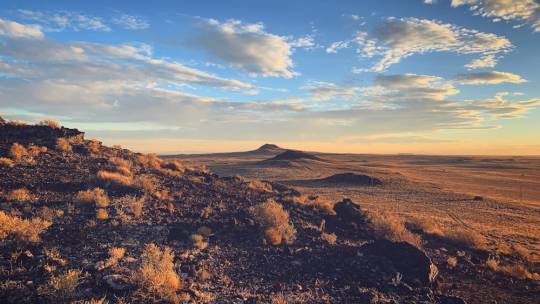
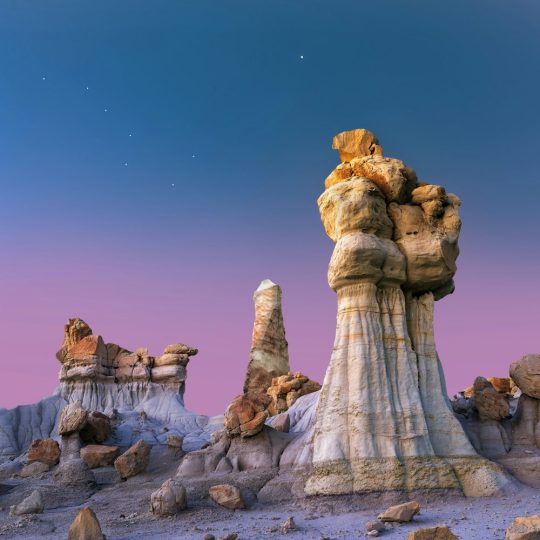

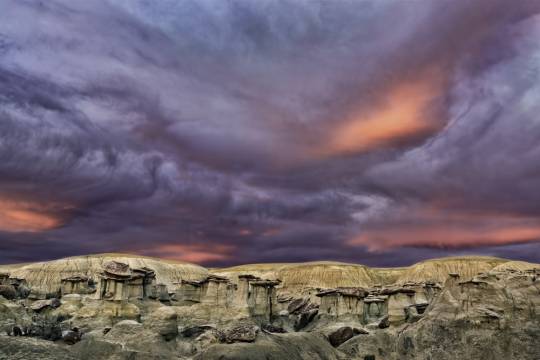
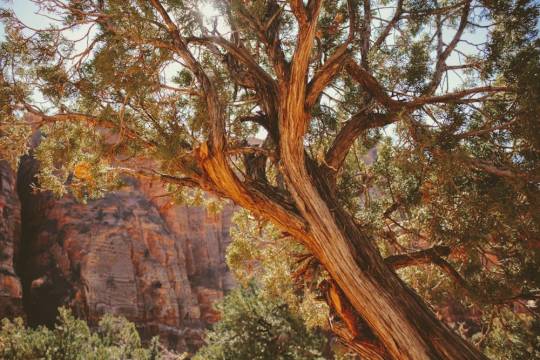
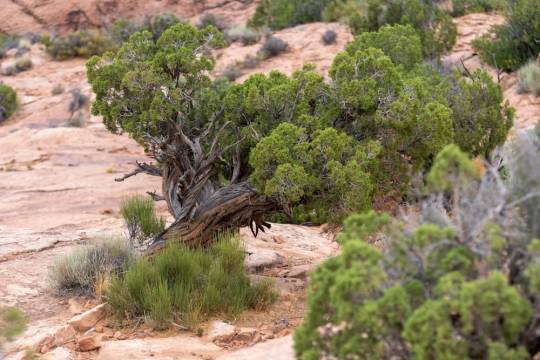
[ID 1: tall, snowcapped rocky mountains rising above a plain filled with desert scrub
ID 2: brightly colored banded cliff walls of several mesas climbing their way into mountains
ID 3: a desert prairie
ID 4: colorful hoodoos against a twilight sky
ID 5: white sand dunes as far as the eye can see
ID 6: a collection of hoodoos against a stormy sky at sunset
ID 7: a juniper tree standing with a cliff wall in the background
ID 8: several juniper trees on a rocky landscape]
50K notes
·
View notes
Text
November 3, Day 307/308
Day 307 2015

Thanks, Walmart, I'm inspired.
#holidaycards #walmart #magicmikexxl #smh #picoftheday #project365 #day307
Day 308 2016

Crafting for kindergarten
#craft #art #create #november #orange #red #yellow #shadesoffall #picoftheday #project365 #day308
Day 307 2017

Found a whole bag of newspaper plastics on my walk...
#walk #outdoors #plastic #trash #pickitup #throwitaway #notthathard #everydayisearthday #nastytrash #november #picoftheday #project365 #day307
Day 307 2018

Red vine
#fall #autumn #vine #nature #outdoors #flora #red #leaves #fallleaves #november #picoftheday #project365 #day307
Day 307 2019

Spent my extra hour today processing a few images. Enjoy
#light #color #playtime #frozen #ice #flowers #mum #chrysanthemum #purple #pink #nature #extrahour #fallforward #daylightsavingstimeends #november #november3 #2019 #nationalday #nationaldaycalendar #picoftheday #project365 #day307
I think of all the flowers I've frozen the mums did the best.
Day 308 2020

Another week down
#garden #pumpkin #crow #flowers #twilight #tistheseason #fall #falldecorations #falldecor #november #november3 #2020 #picoftheday #project365 #day308
Day 307 2021

Bzzzz
Not sure if it's a bee or wasp...thoughts?
#insect #closeup #nature #buzz #november #november3 #2021 #picoftheday #project365 #day307
Day 307 2022

Just breathe
#breathe #oceanbreath #gulf #water #beach #shore #waves #november #november3 #2022 #picoftheday #project365 #day307
Day 307 2023

I get so caught up i the moment of getting a shot that sometimes the waves get me 🤷🏻♀️
*note cat trap worked beautifully on Leo*
#carrieandleo #beach #water #wave #ocean #sand #barnacles #cattrap #imissmybaby #november #november3 #2023 #picoftheday #project365 #day307
I almost lost Leo in one of the waves that I think this is the last one near the water! 😅
Day 308 2024

Prickly pear on the prairie
#colorpop #dailytheme #pricklypear #cactus #prairie #november #november3 #2024 #picoftheday #project365 #day308
0 notes